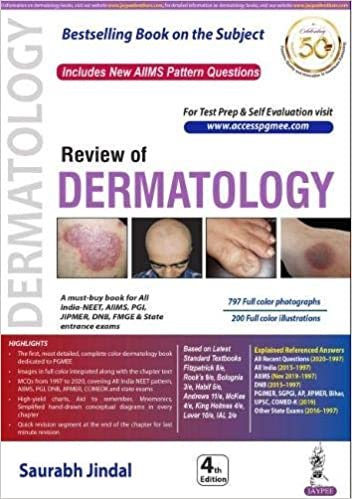Teledermatology: A Comprehensive Overview” is a specialized resource that provides a thorough examination of the practice of teledermatology, a subspecialty of dermatology that utilizes telecommunication technologies to provide remote diagnosis and treatment of skin conditions. This book, part of the “Updates in Clinical Dermatology” series, offers a comprehensive overview of the principles, applications, challenges, and future directions of teledermatology.
Key features of “Teledermatology: A Comprehensive Overview” may include:
- Foundational Principles: The book begins with an introduction to the foundational principles of teledermatology, including its history, evolution, scope of practice, and underlying technologies. It discusses the rationale for implementing teledermatology services, highlighting its potential to improve access to dermatologic care, enhance efficiency, and reduce healthcare disparities.
- Clinical Applications: The book explores the various clinical applications of teledermatology, including store-and-forward (asynchronous) teledermatology, live interactive (synchronous) teledermatology, mobile teledermatology, and hybrid models. It discusses the indications, advantages, limitations, and best practices associated with each modality, as well as the types of skin conditions amenable to remote evaluation and management.
- Technological Considerations: The book addresses the technological considerations involved in implementing and operating teledermatology services, including requirements for hardware, software, connectivity, data security, patient privacy, and regulatory compliance. It discusses emerging technologies such as smartphone apps, wearable devices, artificial intelligence, and machine learning algorithms in the context of teledermatology.
- Clinical Workflow and Protocols: Guidance on developing clinical workflows, protocols, and standard operating procedures for teledermatology practice is provided. The book discusses patient referral processes, image acquisition techniques, quality assurance measures, documentation standards, and communication protocols for remote consultations.
- Legal and Ethical Considerations: The book examines the legal and ethical considerations associated with teledermatology practice, including licensure, credentialing, informed consent, malpractice liability, reimbursement policies, and regulatory frameworks governing telemedicine. It emphasizes the importance of adhering to professional standards, patient confidentiality, and ethical guidelines in delivering teledermatology services.
- Clinical Effectiveness and Outcomes: The book reviews the evidence on the clinical effectiveness, diagnostic accuracy, patient satisfaction, and cost-effectiveness of teledermatology compared to traditional in-person dermatology consultations. It highlights studies evaluating the impact of teledermatology on access to care, healthcare utilization, treatment outcomes, and patient-reported outcomes.
- Implementation Strategies: Practical guidance on implementing teledermatology programs within healthcare systems, academic institutions, community clinics, and private practices is provided. The book discusses strategies for stakeholder engagement, interdisciplinary collaboration, provider training, workflow integration, and sustainability planning.
- Future Directions: The book explores emerging trends, innovations, and future directions in teledermatology, such as virtual reality (VR) consultations, tele-dermoscopy, teledermatopathology, remote monitoring of chronic skin conditions, and tele-education initiatives. It discusses opportunities for research, quality improvement, and expanding access to dermatologic care through telemedicine.
Overall, “Teledermatology: A Comprehensive Overview” serves as a valuable resource for dermatologists, healthcare administrators, policymakers, and other stakeholders interested in leveraging telecommunication technologies to enhance dermatologic care delivery. Its comprehensive coverage, evidence-based insights, and practical recommendations make it an indispensable guide for navigating the evolving landscape of teledermatology.

















 Prepladder Notes
Prepladder Notes Stethoscope
Stethoscope Plab Books
Plab Books Radiology Books
Radiology Books Surgery Books
Surgery Books












Reviews
There are no reviews yet.